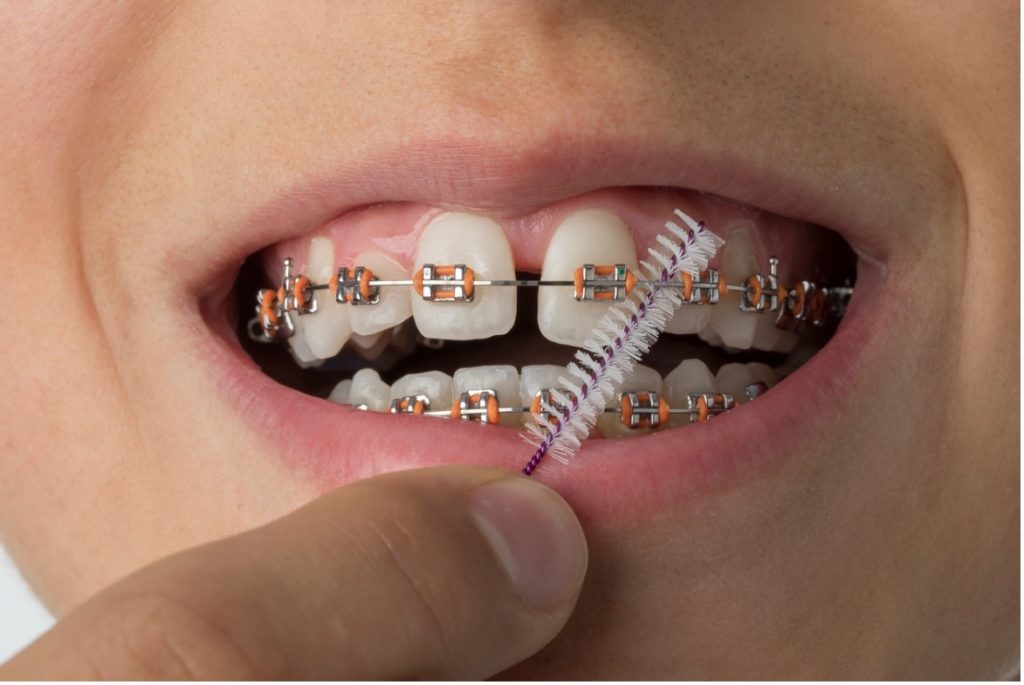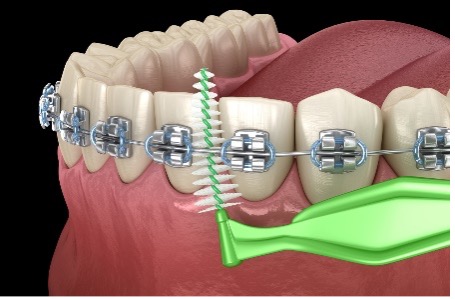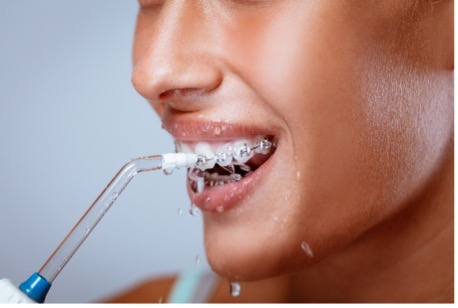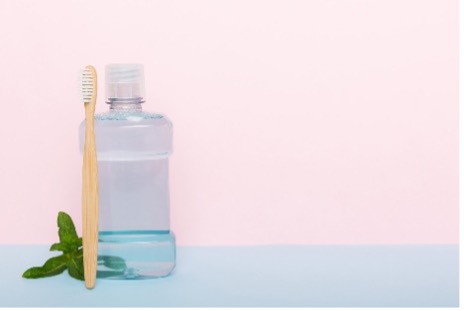
You’ve often heard that maintaining good dental hygiene is essential, especially while wearing braces. When you wear braces, food can become particles that can accumulate on teeth and in braces and, over time, turn into plaque. The bacteria that result from this accumulation can lead to gum disease, tooth decay, and even loss of teeth. For this reason, you will hear from us repeatedly while wearing braces to floss and brush your teeth. But have you ever wondered whether you should floss or brush first? Read on to find out the answer.
What Do Dental Experts Say?
When it comes to the question of whether to floss before or after brushing, dental experts generally recommend flossing before brushing. Flossing as the first step can help to loosen and remove any food particles between the teeth, making it easier for the toothbrush to clean the teeth effectively. Additionally, flossing before brushing can help dislodge any food particles stuck between the teeth, reducing the risk of cavities and gum disease.
A Recent Study
Researchers found in a clinical trial that flossing before brushing was the most efficient for thoroughly removing dental plaque. The plaque was reduced significantly more in the group that flossed first and then brushed than in the group that flossed after brushing. Flossing first also increased the amount of fluoride on the teeth from the toothpaste. This finding is important because fluoride strengthens your tooth enamel, making it easier to resist decay. So by flossing first, the fluoride in your toothpaste can do a better job.
Why You Don’t Want to Skip Flossing & Brushing
When you don’t regularly floss and brush, you are putting yourself at risk for poor oral health. Your braces themselves won’t cause oral issues, but they may create spaces that can be difficult to clean, creating areas for potential tooth decay. When food and plaque accumulate around your braces, this can lead to permanent white marks (decalcification), cavities, swollen gums, bad breath, and periodontal disease.
Tools and Tips
- Interproximal brushes

Interproximal brushes are great at dislodging plaque and food particles trapped between teeth and clearing out debris that catches on brackets and wires.
- Water flosser or irrigator

Water flossers work quickly to flush out food particles.
- Fluoride mouth rinse and toothpaste

A daily fluoride rinse can strengthen tooth enamel and help prevent white marks (decalcification).
And remember our tips from our blog Keeping Your Braces Clean at School and keep your dental kit in your backpack when you travel or go to school.
- A regular soft-bristle toothbrush
- Toothpaste of your choice (we suggest a travel size for your school kit)
- Flavored floss or floss holders
- Dental wax
- Extra bag of rubber bands
- A small travel pouch to hold all these dental supplies.
Play Your Part
Orthodontic treatment is a team effort between your orthodontist, dentist, and you. Just like with sports you play; every team member must do their part for the team to win. Whether you are wearing traditional braces or clear braces, your part includes:
- Brush for two minutes after every meal or snack. If you can’t brush, make sure to at least rinse your mouth with water.
- Floss at least once a day, ideally before you brush.
- Make sure your teeth are thoroughly clean before you go to bed.
- Avoid sugary foods and drinks.
- See your general dentist for your recommended cleanings and checkups.
Sincerely,
Your Friendly Team
McDonough Orthodontics
